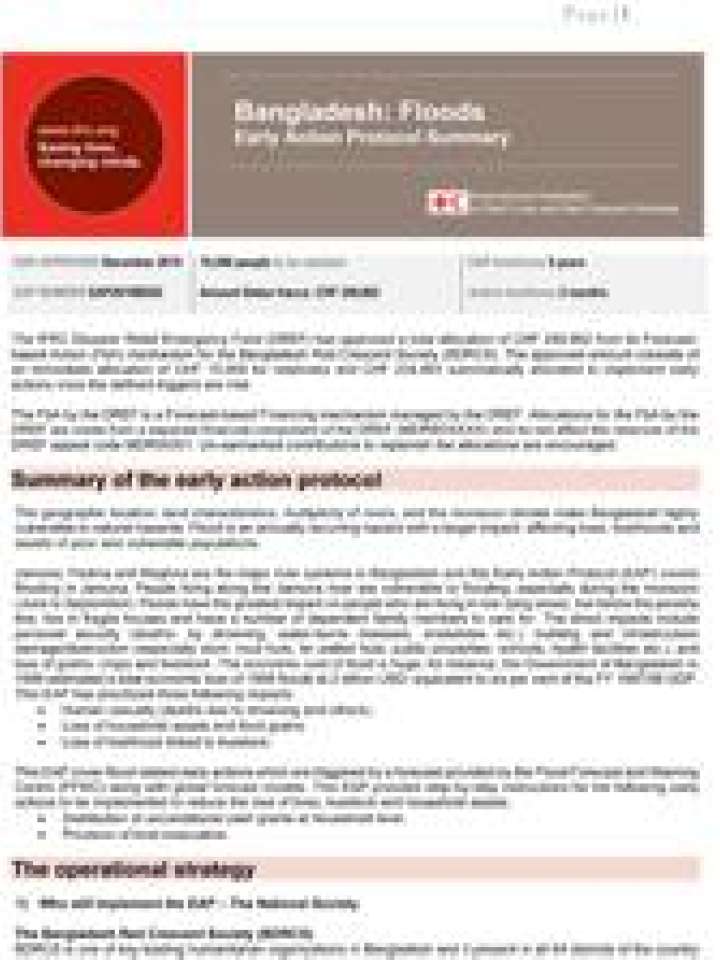Bangladesh: Floods early action protocol summary
The IFRC Disaster Relief Emergency Fund (DREF) has approved a total allocation of CHF 249,862 from its Forecast- based Action (FbA) mechanism for the Bangladesh Red Crescent Society (BDRCS). The approved amount consists of an immediate allocation of CHF 15,059 for readiness and CHF 234,803 automatically allocated to implement early actions once the defined triggers are met.
Summary of the early action protocol
The geographic location, land characteristics, multiplicity of rivers, and the monsoon climate make Bangladesh highly vulnerable to natural hazards. Flood is an annually recurring hazard with a larger impact- affecting lives, livelihoods and assets of poor and vulnerable populations.
Jamuna, Padma and Meghna are the major river systems in Bangladesh and this Early Action Protocol (EAP) covers flooding in Jamuna. People living along the Jamuna river are vulnerable to flooding; especially during the monsoon (June to September). Floods have the greatest impact on people who are living in low-lying areas, live below the poverty line, live in fragile houses and have a number of dependent family members to care for. The direct impacts include personal security (deaths- by drowning, water-borne diseases, snakebites etc.), building and infrastructure damage/destruction (especially slum, mud huts, tin walled huts, public properties- schools, health facilities etc.), and loss of grains, crops and livestock. The economic cost of flood is huge; for instance, the Government of Bangladesh in 1999 estimated a total economic loss of 1998 floods at 2 billion USD- equivalent to six per cent of the FY 1997/98 GDP. This EAP has prioritized three following impacts:
• Human casualty (deaths due to drowning and others).
• Loss of household assets and food grains.
• Loss of livelihood linked to livestock.
This EAP cover flood related early actions which are triggered by a forecast provided by the Flood Forecast and Warning Centre (FFWC) along with global forecast models. This EAP provides step-by-step instructions for the following early actions to be implemented to reduce the loss of lives, livestock and household assets.
• Distribution of unconditional cash grants at household level. • Provision of boat evacuation
Explore further
